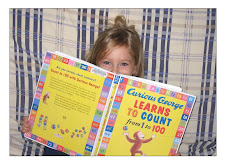
Bibliographic Information
Giovanni, Nikki (ed). HIP HOP SPEAKS TO CHILDREN. Ill. by Kristen Balouch, Michele Noiset, Jeremy Tugeau, Alicia Vergel de Dios, and Damian Ward. Naperville, Ill.:Sourcebooks, Jabberwocky. ISBN: 9781402210488
Summary and Analysis
The collection presented is a combination of many authors, such as (but not limited to) Mos Def, Gwendolyn Brooks, Eloise Greenfield, Tupac Shakur, Maya Angelou, Queen Latifa, Langston Hughes, Kanye West, and Nikki Grimes. Each poem offers an inner thought or celebration. When Gwendolyn Brooks offers "Aloneness", Nikki Giovanni offers "The Girls in the Circle". Whether looking for solitude and reflection or celebration and humor, this is a mix of thought, form, rhythm, and voice. Perhaps one of the best elements about this book is the audio CD that comes along with it which offers certain tracks of poetry being read by the poet. Most rhyme and have clear rhythm probably due to the careers of many of the writers: poets, rappers, singers. This collection shows that poetry is everywhere, especially around those in the arts. In the 65 pages of poetery provided, there are various topics, emotional responses, structures, lengths, and tone. This collection includes poems about people, relationships, music, and life. The added bonus is having both the text and the audio of Dr. Martin Luther King, Jr.'s "I Have a Dream" speech provided.
In addition to the poetry, art, and audio, there are brief biographies on the authors, singers, leaders and a brief introduction and a table of contents. This book is far more than entertaining hip hop, but is an exhibition of art and powerful words. Breaking away from the open minded reviewer for a moment, I will state my personal view that this collection is needed in libraries, both public places and personal homes and it will soon be added to mine.
Speaking of art, the illustrations could be in a book alone with no words as each picture is frame-able, love-able, and enjoyable. There are messages of hope, perseverance, childlike whimsy, and dreams offered. Some illustrations are focused on the voice of the poem focusing on children while other illustrations focus on the neighborhood or imagery suggested in the poem. With so many to choose from it is difficult to find a favorite poem or illustration.
Highlighted Poem
I considered "People Equal" by James Berry, "It's Love" by Jill Scott, and "Books" by Eloise Greenfield, but the one that stuck with me the longest was "The Rose That Grew from Concrete" by Tupac Shakur. It is below:
Did u hear about the rose that grew from a crack
in the concrete
Proving nature's laws wrong it learned 2 walk
without having feet
Funny it seems but by keeping its dreams
it learned 2 breathe fresh air
Long live the rose that grew from concrete
when no one else even cared!
I liked this poem for the message, the simple idea yet powerful meaning. It evokes emotion, at least to me, and a sense of hope. Rooting for the underdog or unsupported, it is nice to think of something living to see its dream when no one seemed to care. The illustration accompanying the poem is just as powerful as it doesn't focus on an actual rose, but on a young girl with a rose on her shirt who is looking up, hopefully, in the busy city street, just holding onto her dream.
Connections
The audio CD that comes with the book allows for many discussions. First, the poetry itself can be discussed for issues raised, the hopeful and the less hopeful. Secondly, how amazing for children (adults even) to hear the poems as they were intended - from the poet's own voice! Poetry is a personal expression and this book and CD allow for readers to read the poem to themselves, interpret the poems as they would, and then to hear the poet's version. Perhaps the interpretations are different? If so, this would allow for a closer study on rhythm or vocabulary chosen. It would also allow the opportunity for children to practice reciting poetry. This collection would bring fun into a study of poetry, which most adults wish they had as children.
The additional information on the poets would allow for further discussion not only on the topic that poetry is everywhere, but also discussion into who these people are. This would introduce readers to such great names as Langston Hughes and Maya Angelou as well as give them familiar people who may make poetry seem cool and fun, such as Queen Latifa and other rappers and actors.





